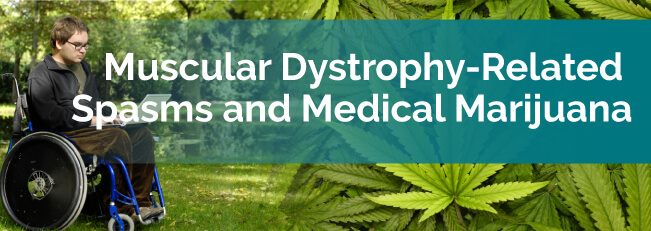
Muscular dystrophy is a rare disease that affects hundreds of thousands of patients in the United States. There’s sadly no cure for MD, but the medical field continues to search for one. The term muscular dystrophy includes 30 different inherited disorders. Although each presents itself differently, all are degenerative and get worse over time.
One of the most painful symptoms associated with muscular dystrophy is severe spasms. Physical therapy and pharmaceutical options are available to help manage the intensity of these symptoms and the pain they can produce. However, medical marijuana is gaining popularity as a treatment for this disorder.
A genetic mutation causes muscular dystrophy and creates defects in a particular muscle protein that affects a person’s skeletal muscles. Nine types of MD most commonly affect patients:
Each type of MD presents itself at a different time in the patient’s life, from infancy to middle age. Symptoms are similar, but they vary in intensity and progression. Some people can manage their symptoms for years, while others weaken at a young age.
All muscular dystrophy disorders lead to loss of strength due to the wasting away of muscle tissue. They often result in a physical disability and possible deformity. Because there’s no cure, treatment typically focuses on helping patients do their best to manage these symptoms.
Many neuromuscular disorders, including muscular dystrophy, cause severe spasms and cramping. This sensation is triggered by stiffly contracted muscles that don’t relax.
Most people can control when their muscles contract or relax by moving their limbs. When even a few fibers of these muscles contract involuntarily, it’s called a spasm. Cramps are forceful spasms that sustain for a time. These muscles contractions can become painful.
MD patients develop muscle spasms due to nerve damage. Neurons carry signals from the brain to the body to control voluntary muscle movement. When these nerve cells become unhealthy, the communication falls apart, making muscles weaken or atrophy (waste away).
Though no cure exists for the symptoms associated with muscular dystrophy, there are some treatments have proven effective:
Medical marijuana has proven to be an effective treatment for many medical conditions. The two most important aspects of muscular dystrophy-related spasms that cannabis meds can target are muscle cramping and pain:
If you or someone you love is suffering from MD-related muscle spasms, medical marijuana could be the solution you’ve been searching for. Search for marijuana doctors on our site to get started treating your chronic pain today.